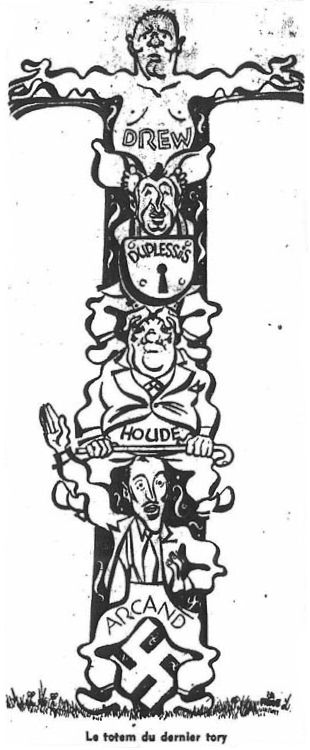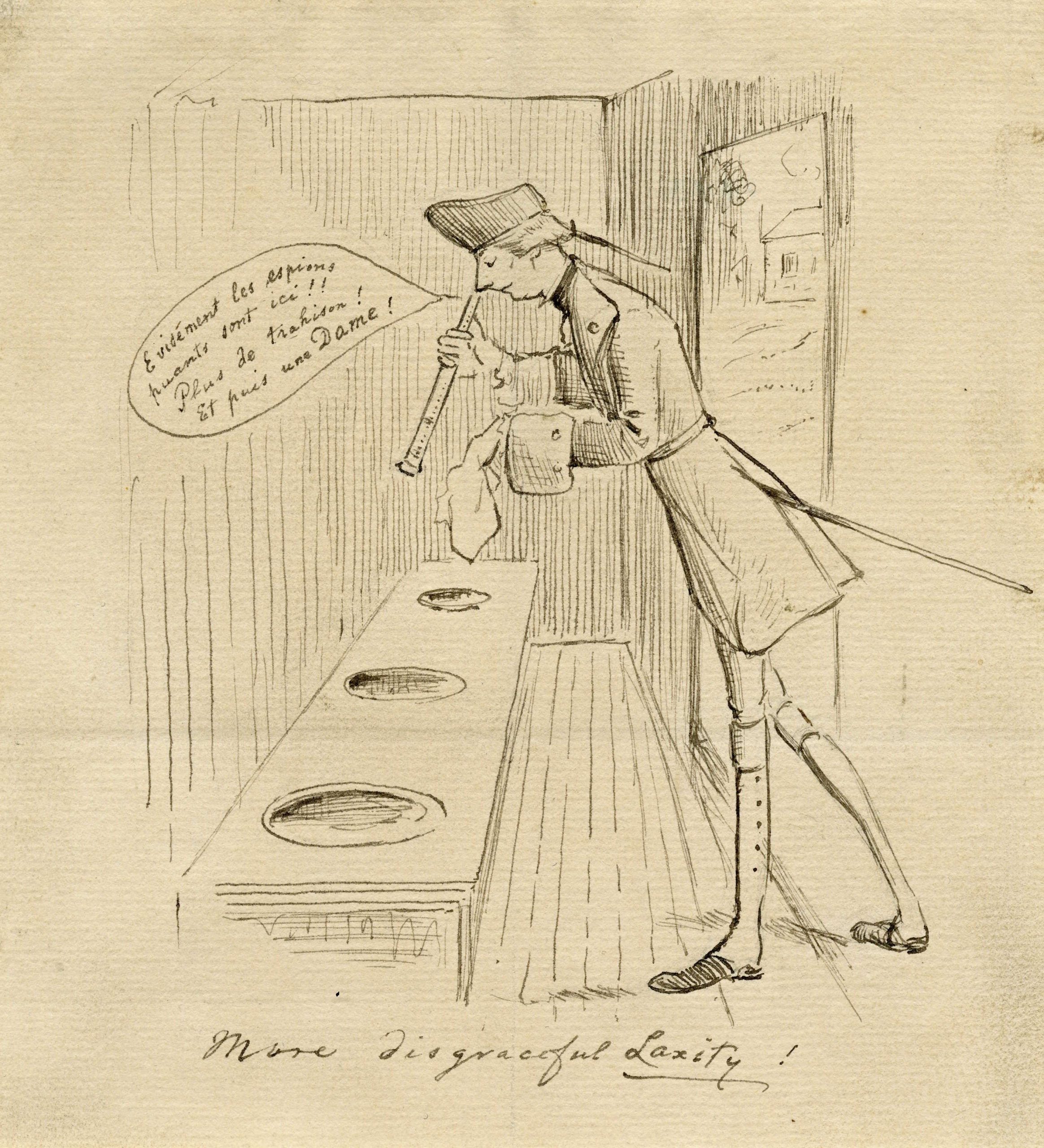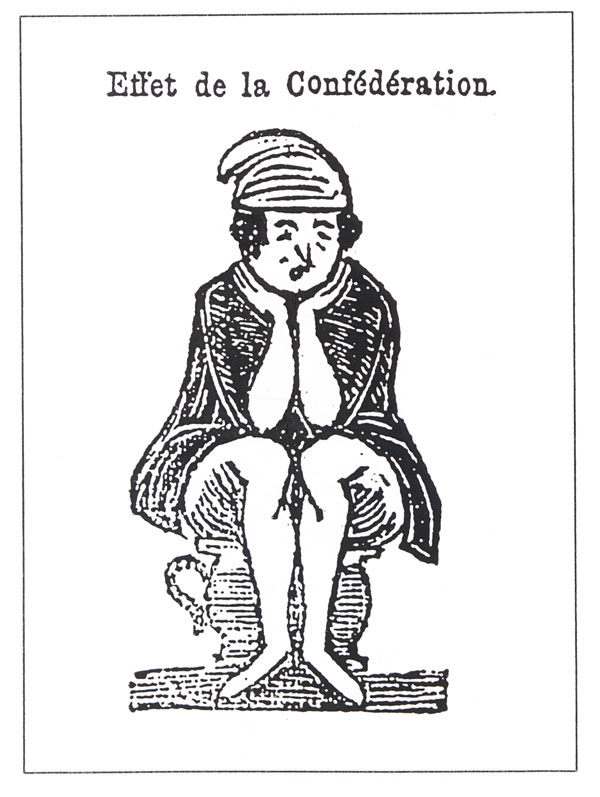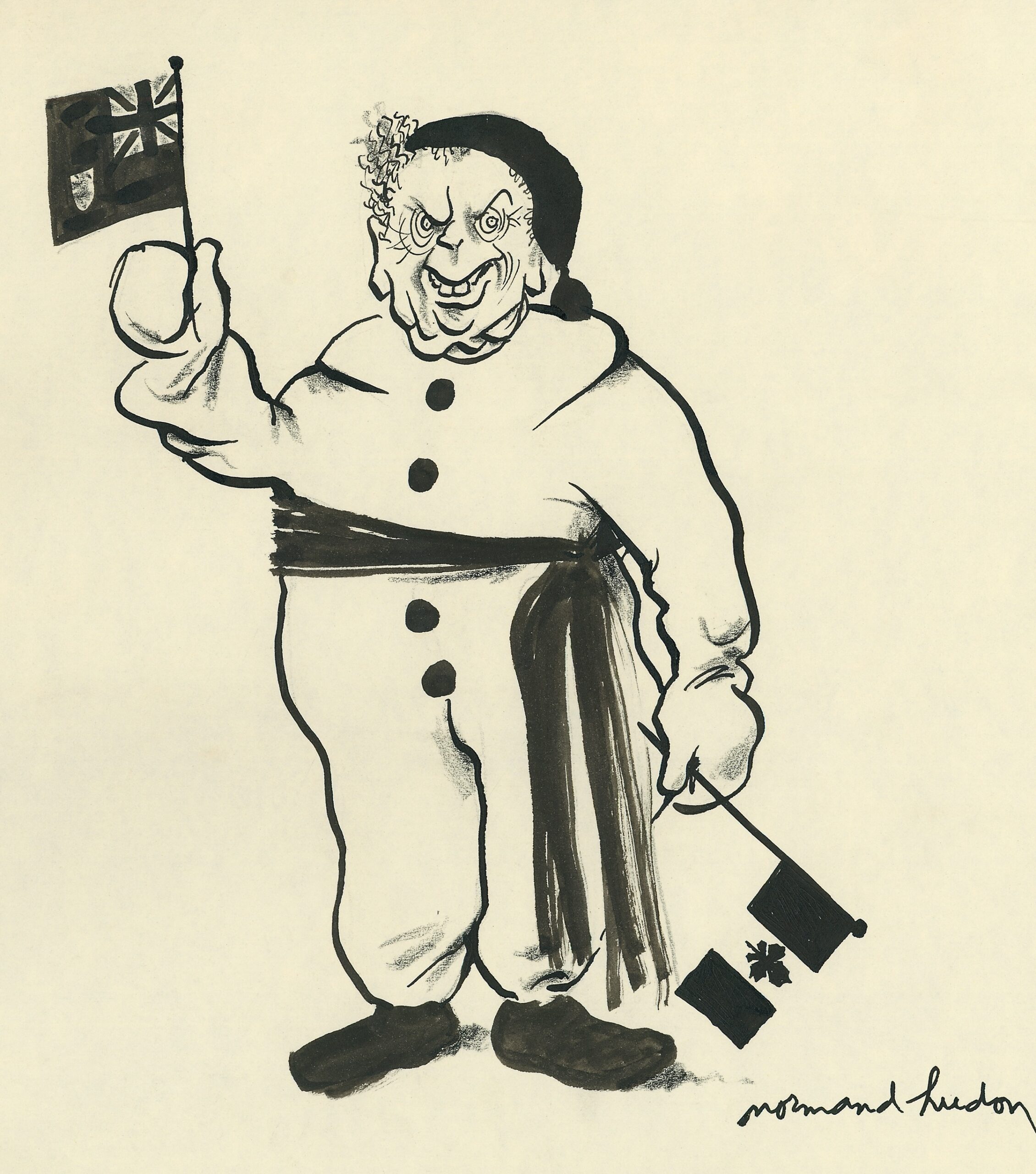A brief history of caricature in Canada
Canada’s first caricaturist was Brigadier General George Townshend, who accompanied General Wolfe on the 1759 siege of Québec City. Townshend’s drawings of the British General were somewhat unflattering. The humiliated General decided to sue his subaltern upon his return from battle. However, Wolfe’s tragic demise on the Plains of Abraham let the Brigadier General off the hook, but he was nonetheless subject to extensive criticism from the British military.
Opinion drawings made a comeback in the late 18th century with the first elections in Upper and Lower Canada. The tradition held strong among English-Canadians, whose newspapers frequently published drawings originating in England. French-Canadian caricatures did not surface until 1863 when La Scie, a humour newspaper, started circulating the drawings of Jean‑Baptiste Côté opposing Confederation. Since then, political and intellectual movements in French Canada would have their individual opinion newspapers, hiring one or more caricaturists whose drawings thrilled readers.
The late 19th century also witnessed the emergence of a humouristic press, with more than 50 publications seeing the light of day, albeit most of them achieving only very limited readership. One of the major publications of the day was the Canadian Illustrated News, created in 1869, which published drawings by Octave‑Henri Julien. He was eventually hired by The Montreal Star to provide political illustrations, becoming the first caricaturist affiliated with a daily newspaper.

Caricature depicting the members of the Conservative Party (Tories) by Robert LaPalme, published in Le Canada, June 22, 1949.
In the 20th century, the birth of major newspapers such as those we know today professionalized the trade of caricaturist. Several names became famous among francophones: Robert LaPalme at Le Devoir, Normand Hudon and Serge Chapleau at La Presse, and of course, Bado at Le Droit.





